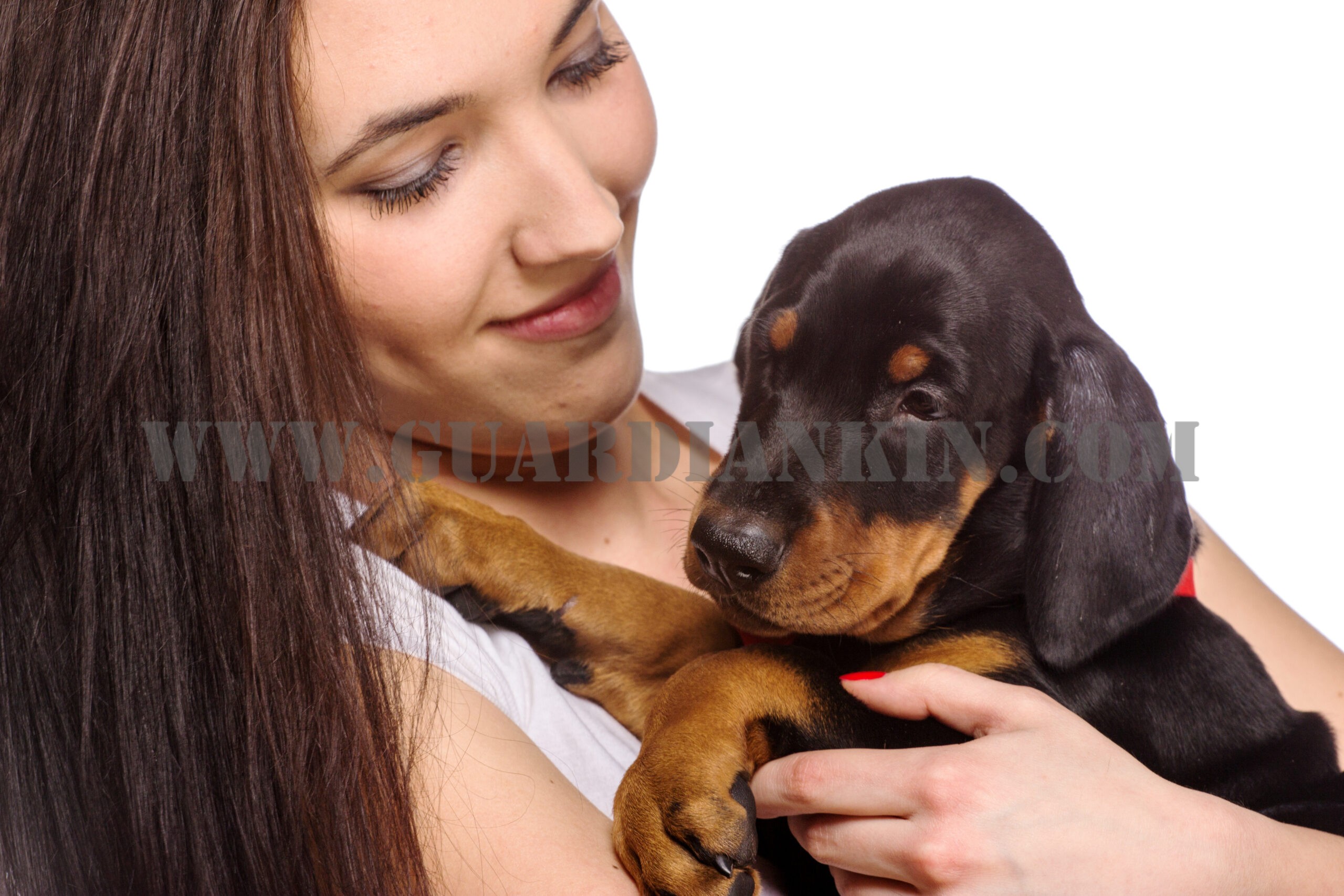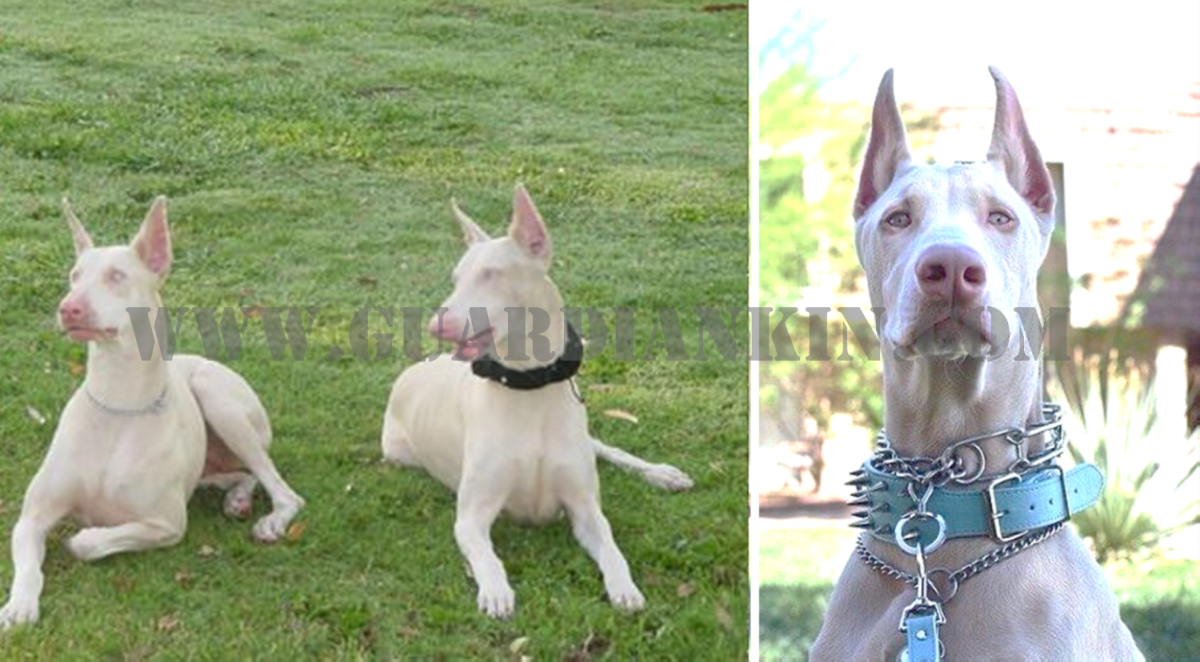When you arrive to pickup your doberman puppy they will be freshly bathed and wearing a collar with our tag on them. Please leave this collar on them until at least you have acquired your own tag. This tag will help the dog get reunited with you should they go missing before you have a chance to get your own tag. We recommend bringing your own collar, please ask us what size collar you need, and putting that collar on beside our collar and using that collar without the tag to affix any leashes to so that if they break off they still have their ID. Our doberman puppies are also micro chipped to our kennel as a backup. We will NOT transfer these microchips but we will keep the information provided by the new owners on file and contact you if we are contacted about your dog being found. If we cannot get a hold of you we will step in and pickup the dog and hold them while we try to locate you. This is very important to prevent the dog being euthanized, stolen, or turned over to a rescue without your knowledge as well as to keep the terms of your contract with the kennel. New owners are welcome AND encouraged to place their own chip as well if they so desire. Generally the chip with the newest information will be called first. We offer this service free, our number will never change, and we invite you to update your information with us should it change so that we can always contact you if the dog is found. We will never sell your contact information or use it for sales solicitations.
Please note that whoever holds the dog on the way home is going to end up being the likely favorite person. So the person whose dog it is going to be should be the one holding the dog. If they cannot hold the dog then placing the dog in a travel crate is the best way to avoid this. We recommend that you place the dog in a travel crate, simply because a loose puppy is a very big risk to cause an accident. If there is an accident a lose puppy is much more likely to be hurt or thrown from the vehicle. We take our puppies on short car rides starting at 6 weeks old and they should be fairly used to a 30 minute car ride but they may become restless on longer rides. We recommend bringing toys and chews to occupy your puppy and stop any screaming or whining. You should also understand that if you dog is under 4 months old they are not fully housebroken and may have an accident on longer rides. Puppies may also get carsick on longer rides. Bringing extra bedding is highly recommended.
For the first 24 hours up to 2 weeks your dog will likely trick you into believing they are a super mellow calm dog. Unless you have taken a retired dog from us this is very likely not the case. Most working breeds go into what we call “I have been dognapped” stage. They are very withdrawn, quiet, and often low energy during the dognapped stage. This is a normal reaction but you should not expect it to last. Once they get comfortable their true personality will come out and they will begin to be a normal high energy working animal. We recommend not working on any serious training during this time and just let the dog get used to its new surroundings, new companions, and new routine.
Puppies have very little ability to hold their bladders or bowels. You should not bring an 8 week old puppy home and expect they will be housebroken in short order. It can take 4-6 months for a puppy to be reliably house broken. You will have the most success housebreaking your puppy if you use a crate to train them. This crate needs to be the right size or you will end up training them to go to the bathroom in their crate. It must only be just big enough for the puppy to stand without touching the roof and turn around. Any additional room will lead to your puppy deciding to go to the bathroom in their crate more quickly. Your puppy at 8 weeks old can only go about 3-4 hours max without a bathroom break. Take your puppy out before and after play sessions, directly after meals, and any time they start acting real interested in sniffing around the floor. You need to make going outside the best thing every with treats and praise after outside pottying but you should NOT punish your puppy if they go to the bathroom where they are not supposed to. They are not doing it out of malice or forethought. Puppies have very little “notice” they have to go and will immediately seek to go when they get the urge. Punishing your puppy for this can lead to a break down in your bond and will set back potty training. If you have to leave your puppy for long periods we recommend not leaving them in a crate. Setting up an area with a doggie playpen that is easy for your to clean will help avoid your dog soiling themselves and having to stand or lay in it. If the dog is left in a crate with their own excrement for long periods of time they will lose the inhibition dogs naturally have to avoid pottying where they sleep and at that point pottying training them will become nearly impossible.



